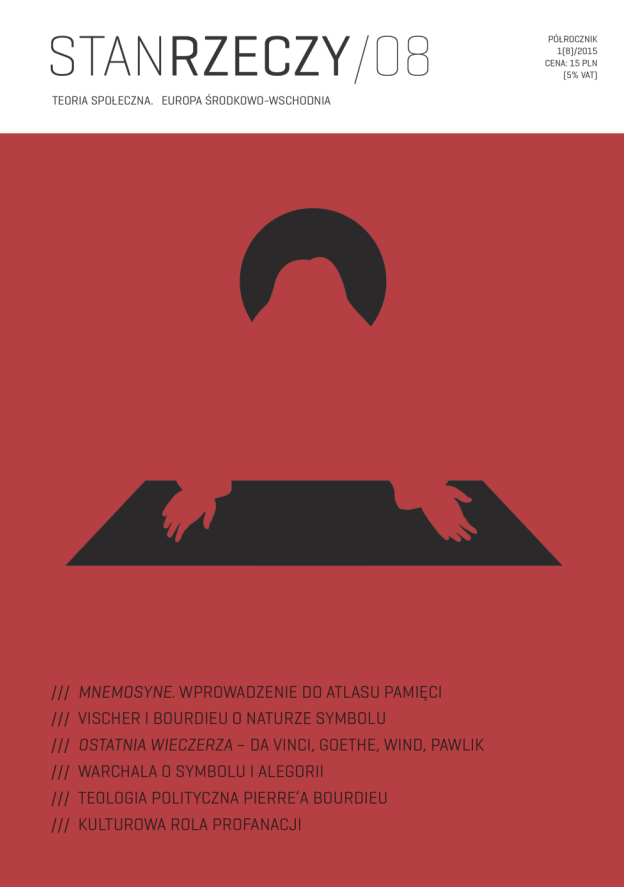Symbol religijny w literackich nieortodoksyjnych użyciach. Szkic o kulturowej roli profanacji
The Religious Symbol in Unorthodox Usage. An Essay on the Cultural Role of Profanation
Author(s): Małgorzata JankowskaSubject(s): Christian Theology and Religion, Anthropology, Theology and Religion, Cultural Anthropology / Ethnology
Published by: Wydział Socjologii Uniwersytetu Warszawskiego
Keywords: religious symbol;profanation;canon;apocrypha;cultural memory;
Summary/Abstract: Artykuł ma na celu analizę przekształceń symbolu religijnego. Jegorozmaite nieortodoksyjne użycia widoczne są m.in. we współczesnychnarracjach apokryficznych. Teksty te, wykorzystujące postaci, motywyi symbole obecne w Piśmie Świętym, mają często charakter profanacjiczy obrazoburstwa, lecz propagując treści stojące niejednokrotniew sprzeczności z kanonem, paradoksalnie utrzymują go w centrum semiosfery.Analiza tego typu przekształceń pozwala dostrzec rolę, jaką symbolodgrywa w procesach autokomunikacji kultury, łącząc to, co tradycyjne,z tym, co nowe, a tym samym umożliwiając kulturze kontakt z przekazamiźródłowymi. To szczególnie ważny bodziec do postrzegania tożsamościkulturowej jako ciągłej i spójnej.Symbol jest najtrwalszym i najstarszym nośnikiem pamięci kulturowej,a jego przekształcenia (choćby były profanacją) wspomagają jejpracę. Wchodząc w nowy kontekst nie traci on swoich poprzednich znaczeń,lecz nabywa nowe, ujawniając tym samym swe bogactwo semantyczne.Symbol jest zatem ważnym elementem dynamizującym kulturę i zapobiegającym jej petryfikacji. The aim of the paper is to analyze transformations of the religious symbol. Various unorthodox uses of the symbol may be found in modernapocrypha. The texts utilize some biblical figures and motifs, which canbe regareded as a profanity. Although their contents are often contradictoryto the biblical canon, the traditional myth as it is presented in themparadoxically remains in the centre of the semiosphere.An analysis of this kind of transformations of the religious symbolenables us to see the role it plays in the processes of cultural autocommunication.Those unorthodox uses connect the traditional with themodern and allow dynamically changing culture „to remember” its ownroots. The fact that culture is able to communicate with itself is a basiccondition of its cohesive identity.The religious symbol is the oldest and most permanent medium ofcultural memory and its transformations (profane or not) enhance thememory. As used in a new context, symbol does not lose its previousmeanings but gains new ones instead. In the process its semantic wealthbecomes apparent. The changes and reinterpretations of the symbolprevent the ossification of culture.
Journal: Stan Rzeczy
- Issue Year: 2015
- Issue No: 8
- Page Range: 246-265
- Page Count: 20
- Language: Polish

